
Dowright
-
Posts
270 -
Joined
-
Last visited
Posts posted by Dowright
-
-
Seth,
No. 197411 made in 1926. (I have the receipt for No. 196865, dated 9 January 1926. In this case, I know that it is a 20 key, previously sold on Ebay.)
Dick, Seth, and Others,
If I am willing to estimate the dates, is it too much to ask that you provide a full description of the instrument?
-
 2
2
-
-
DickT,
No 39825 - circa 1897 (No 40000 receipt for 1897) I presume it is 56 key and has metal buttons.
No 57494 - circa 1919 (No 57772 receipt dated 11 March 1919)
-
Stephen
I think that this is the right forum. I plan to advertise a number of miniature concertinas--English, Anglo, and Duet--and wold like for prospective buyers to have this backgound on playing miniatures readily available.
Secbp,
You ar right; they are not toys. Just listen to Tommy Eiliot on English miniature, and Noel Hill on Anglo miniature.
-
Wheatstone 12-key English miniature No. 25114, owned and played by Sam and Betty Aukland, HAS BEEN SOLD. But I will be posting other miniatures--English, Anglo, and duet--for sale.
-
Rick,
I think you have potential as a Lachenal date estimater. I agree with you estimate of 1891. No. 109790--1890. No 128130--1892.
I would appreciate if, when asking for a dating estimate, a full description of the instrument be provided.
All I know about yours is "Anglo 28 key." Wood or metal fretwork? Bone or metal buttons? Steel or brass reeds? Number of bellows folds? Key combination if other than C/G? Any other distinguishing features?
-
Seth,
Lachenal Maccann No 1655 dated as circa 1897,
-
Here are the sale prices of these Jeffries concertinas:
26-key in G/D: $3600
26-key in C/G: $4300
31-key in C/G: $8000
50-key in Bb/F: $3500
Buyer also pays the shipping and shipping insurance. Domestic shipment is by US Postal Registered Mail.
Please send me a message if yo are interested.
-
-
-
-
-
I am selling the following Jeffries Anglos:
31-key in C/G
26-key in C/G
26-key in G/D
50-key in Bb/F
Descriptions from the recent appraisals are attached.
All are by C. Jeffries, Maker (i.e., none of the later Jeffries Bros or Jeffries, Aldershot Road)
You may have heard criticisms of 26-key instruments, but I really like 26-key Jeffries concertinas, specifically for playing Irish tunes.
I have sold three 26-key Jeffries to other playerss, who have played them for a long time and who are very happy with them.
Compared with the 30-key instrument in C/G, the two missing buttuns in the right side of the accidental row of the 26-key in C/G--I never use them and could never miss them.
The last two buttons on the left side of the accidental row of the 30 key in C/G (5th button of F/E and fourth button of A/Bb)--I only very rarely would use the A note on the fourth button but when playing the 26 key, can substitute the A note on the fifth button on the bottom row of the left side.
About the 26-key G/D--the only G/D one that I sold has a long-time happy owner. A substantial number of 26-key concertinas were made by the various major makers. They would not have omited the two keys on each side, if they had thought the keys were of vital importance. If you only have one Anglo and want to play in Irish sessions, obviously a C/G instrument is needed. But if you want a G/D instrument as a second instrument or have other genre of music in mind, I can highly recommend your considering a 26-key. Even though only 8 reeds and reed shoes are absent, the 26-key has a liighter feel that I like a lot.
About the 50-key Bb/F--so you want to play a lot of chords raher than Irish melodies. Then consider the Bb/F, which is the "daddy of all chording Anglos."
About the 31-key in C/G ( 31st key is a left side C/C drone key. This is a classic best-period C. Jeffires concertina. But be prepared to pay twice as much as the prices of the 26-keys and 50-key.
I will make an individual posting of photos for each of these instruments. If interested in a purchase, please send me a personal message, after you have reviewed my subsequent postings.
-
Stephen and Wolf,
You got it. The liitle dome-head bolts are the end bolts attaching the ends to the bellows, and the little flat-head scews hold the fret plates in place.
Incidentally, in the attached photo you will see that it has little plates for leather thumb straps (plus an extra set of holes for attaching such plates.). Factory-supplied thumb straps with such plates are common on Wheatstone Anglo miniatures, but rare on English miniatures. This miniature was the learner instrument for Betty Aukland (note that it is Aukland, not like Auckland, New Zealand). Betty was probably the only professional concertinist who learned on a miniature. Given her small hands, straps probably were in order. But usually an English miniature has no straps and is held between the thumb and little finger of each hand (see Tommy Elliot video at British Pathe). If seated, the left side may rest on the left leg.
-
12-key English miniature is a bit of a misnomer withe respect to "English." An Anglo player can rightly say: "I do not play English concertina," if referring to English concertinas with 48 keys, 55 keys, etc. But the only features that a 12-key "English" and a full-size English have in common are (1) same note on the push and draw and (2) alternating sides to play a scale. Learning to deal with 12 notes is not comparable to the 48 notes of a full-size English. Since we alternate sides to play most tunes on an Anglo concertina, alternating sides to play a scale should be no big deal for an Anglo player.
Therefore, Anglo players are encouraged to consider an "English" miniature, especially since managing the air supply is facilitated by having the same note on the push and draw. Sure, a 12-key "English" miniature has only 12 notes, but the highland pipes have only 9 notes, and there are plenty of pipe tunes. Choose your tunes, pipe or other, to fit your instrument.
-
I am planning to sell several English and Anglo miniature concertinas (and semi-miniatures).
I drafted a long posting,, which disappeared whan I clicked my mouse???? So I plan to be more brief.
The first one is a 12-key Wheatstone English made in in October 1910 and purchased by Sam Aukland in August 1911. Serial No. 25114.
2 3/4 hexagonal ends; raised metal fretwork, metal buttons, steel reeds, riveted action, 8-fold bellows, Original hard case. Excellent condition. In tune, a litle above A 440.
Recently appraised for $3500 (a bit of a premium because of the provenance). I am selling for $2800 plus shipping/insurance to bring it within the price range of possibly someone who must pay VAT. I will accept a personal check (US domestic) or bank draftk (foreign). If interested, please send me a personal message and I will share the fine provenance concerning Sam and Betty Aukland and the canary, Little Tweet.
-
Your concertina sold earlier on Ebay, where it had a fuller description. It is an Excelsior Model, which is akin to an Inimitable Model except it has darker wood fretwork than the Inimitable.
In case of interest, it was made circa 1868.
-
 1
1
-
-
Lynda,
It is an Anglo. Only Anglo Lachenals have 6-digit serial numbers. (Duets have numbers less than 5000, and English have numbers less that 61000.
No. 183566 dates to circa 1910.
Wolf,
No. 89348 dates to circa 1886.
-
Seth,
No.79001--circa 1884
No. 129126--circa 1892
Randy
-
There sems to have been several Rileys from Birmingham, probably from more then one generation, involved in some aspect of the nusical instrument trade. I have seen Lachenal concertinass labeled "W C Riley" and "W S Riley & Son". Then there are also Post Office Directory listings for "Joseph Ripley" and "John Ripley & Sons". What strikes me as unusual is the exterior stampings of "79001" and the "J Ripley".
Dating of 1868 is way off the mark. The 79000 range came long after the "Louis Lachenal" era (up to 1873), well into the "Lachenal & Co" era thereafter. My best estimaate for the year of manufacture is circa 1884.
-
Fusty,
I have a copy of an original bill of sale for a Maccann duet No. 4683, and this invoice is relevant for dating your Triumph. Myrtle's Cook was right that there were separate series for Maccann abd Crane duets, but only until about 1910 when the Butterswoth patent for Crane duets expired. So by the time when your No 4362 was made, all the Lachenal duets had been in a single numbering sequence for almost 2 decades.. The bill of sale for the No. 4683 Maccan was dated 26 April 1929. So I would estimate the date for your No. 4362 Crane as circa 1928.
-
Peter,
You sold it before I had a chance to say that it was made in 1890.
-
Bill N,
I wish I could be a little more precise, but the best I can do for No 6915 is circa1860. Lachenal No. 7728 is shown in Wheatstone's records as having been sold by them to "Bagshaw" on 4 April 1863, and in the Wheatstone records is also Lachenal No 9641 sold to "Eules" on 28 July 1862.
Ken,
You are on the right track. My motto is, "If it's right, it's Dowright"
-
I swear that I am not trying to build up anticipation. I have just been busy with other things. So here is a preview of just some of them. I will not be posting all of them at the same time; I cannot handle all the anticipated correspondence at one time. I will have to give names to the concertinas to ensure that I and the prospective buyer are talking about the same instrument. Maybe I will just the names of fruit.
All the instruments were recently appraised. I will be selling each at 10-to-20 percent below appraised market value. Here is a sample of some of them.
26-key Jeffries in C/G. 26-key Jeffries in G/D. 30-key Jeffries in C/G. 50-key Jeffries in Bb/F. (all are Jeffries Anglos, obviously)
30-key Lachenal in C/G in piccolo range. 20-key semi-miniature Lachenal in C/G.
26-key Jones in Bb/F.
Wheatstone Edeophone (Yes, Wheatstone) in D/A, a very special one. 2 12-key miniature Wheatstone duets. 2 12-key miniature Wheatstone English (the 1911 one has a very strong provenance)
2 12-key miniature Crabb English.
That is most, but not all, of them.
I will start the official advertisements here, in the near future.
And for each sale, there will be a donation to concertina.net.
-
David,
The serial number would be much appreciated. You know that I like to estimate the year of manufacture.

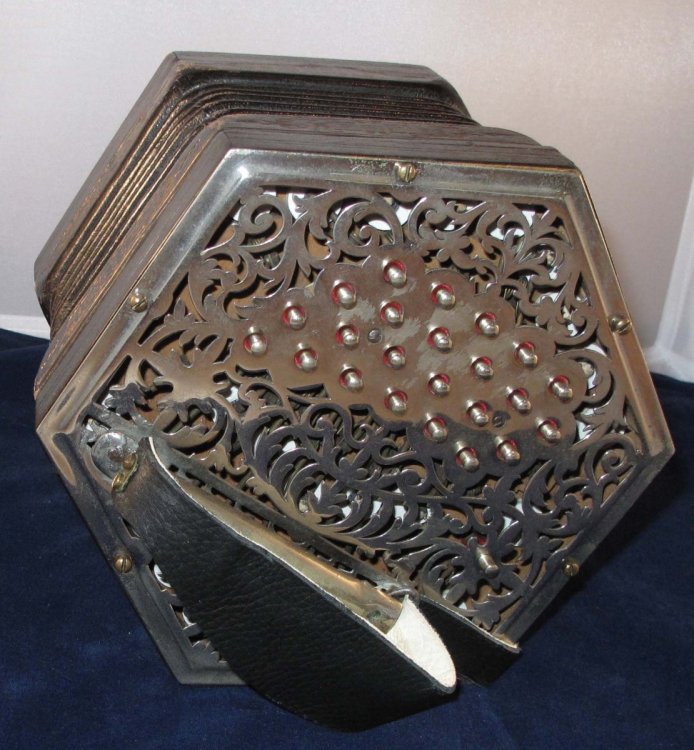
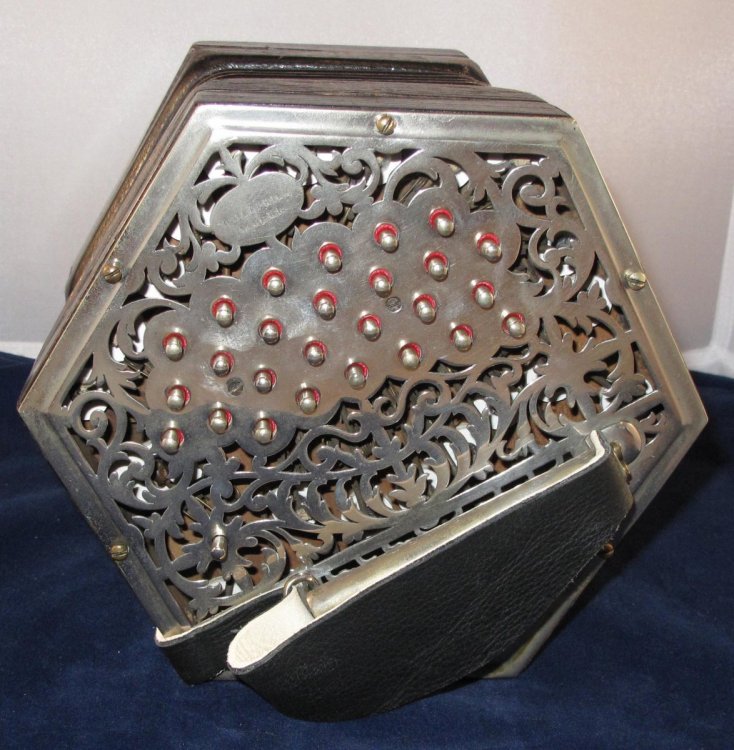
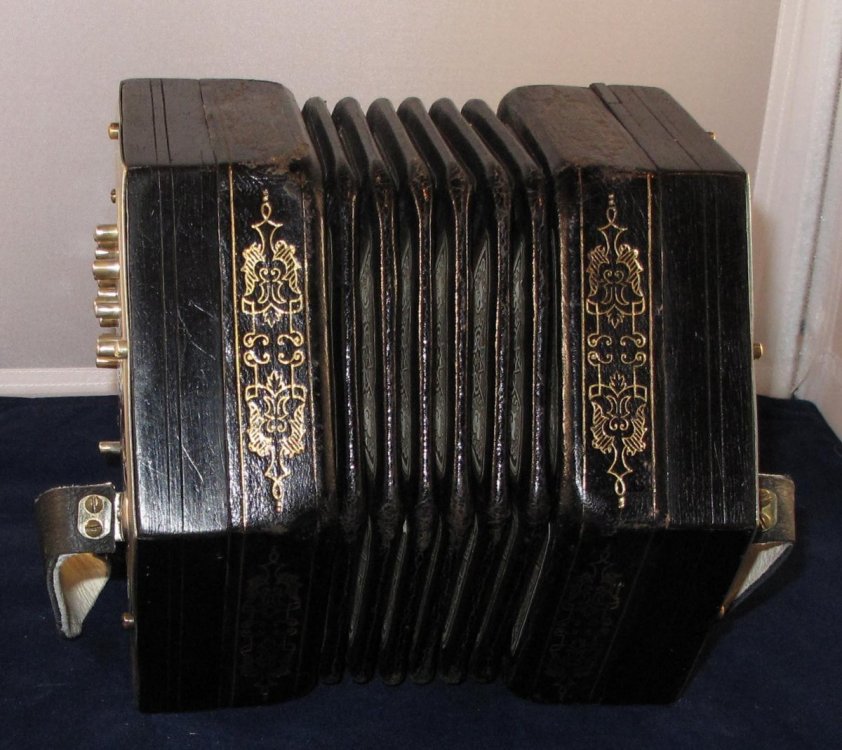

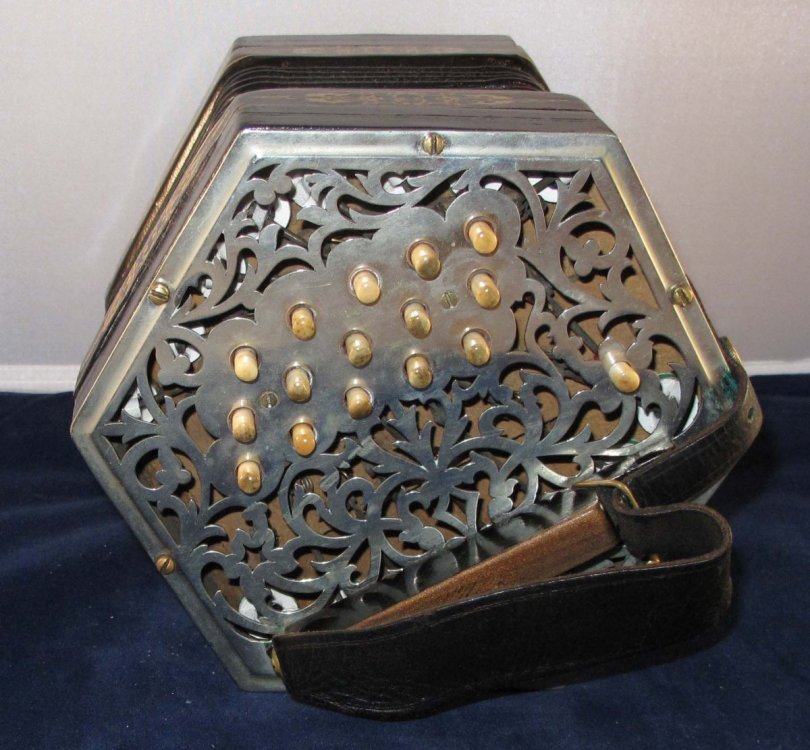
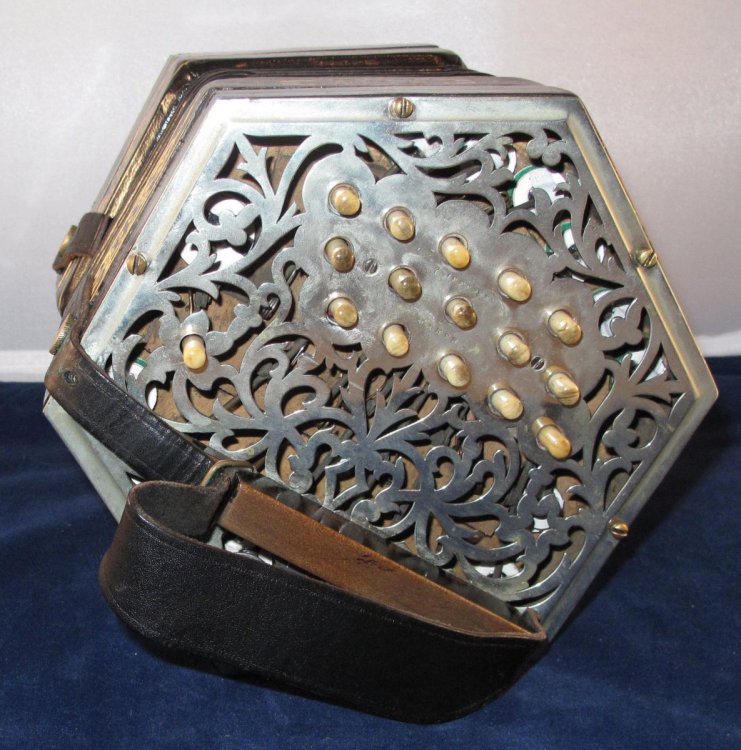
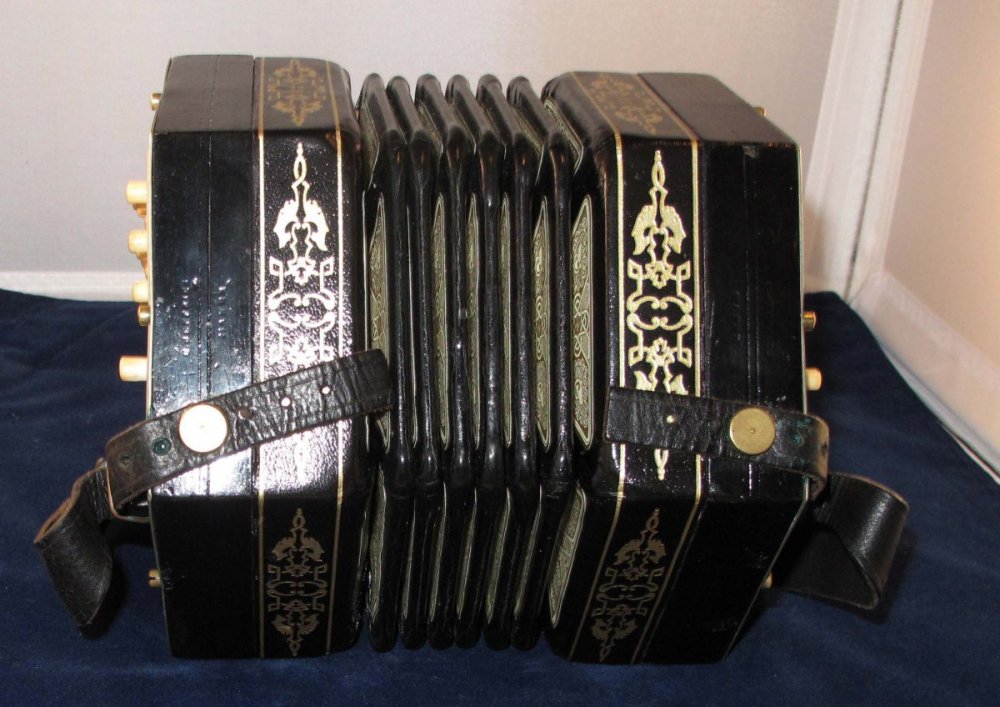
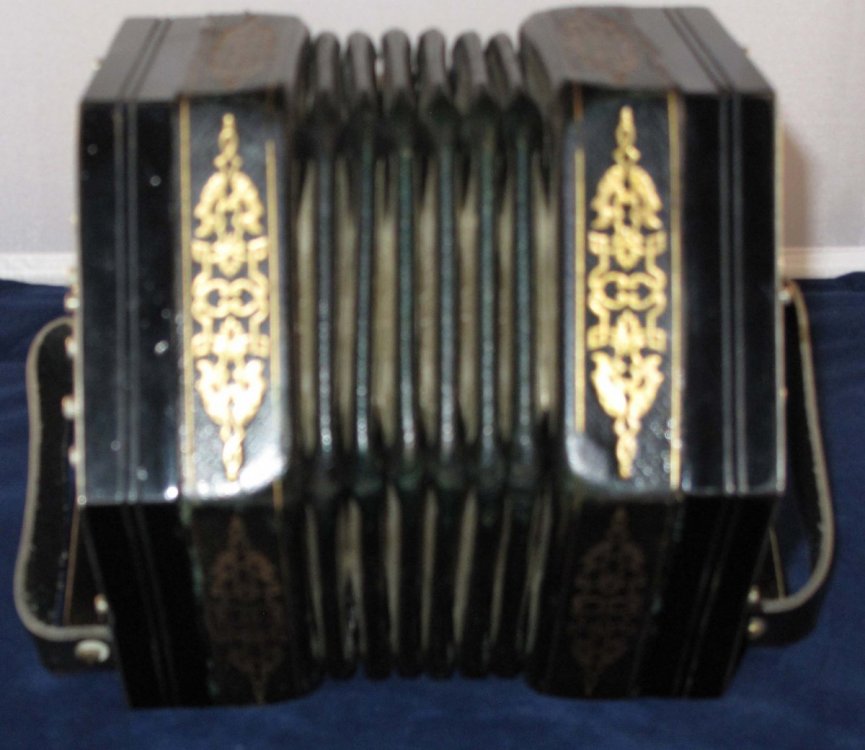
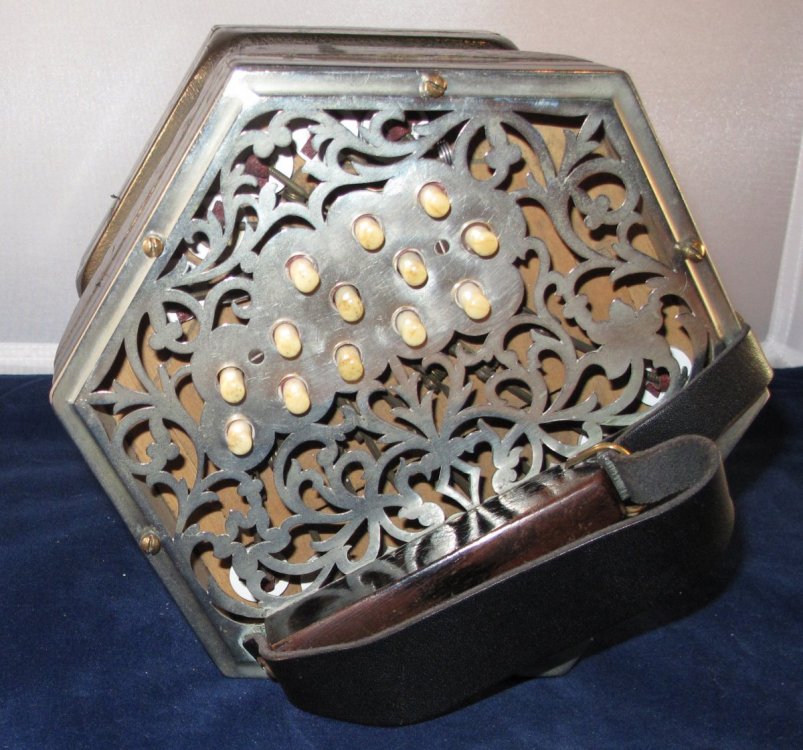
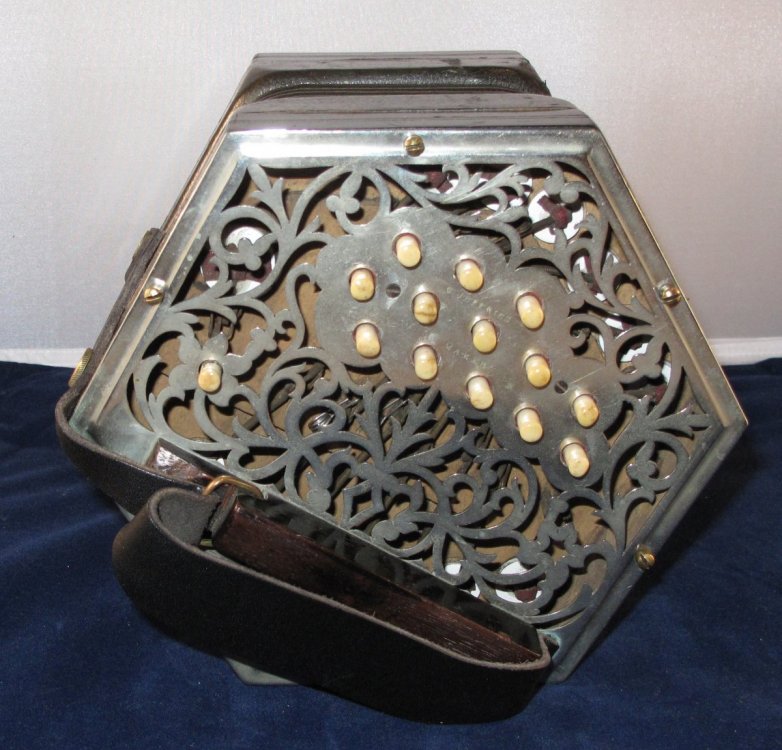
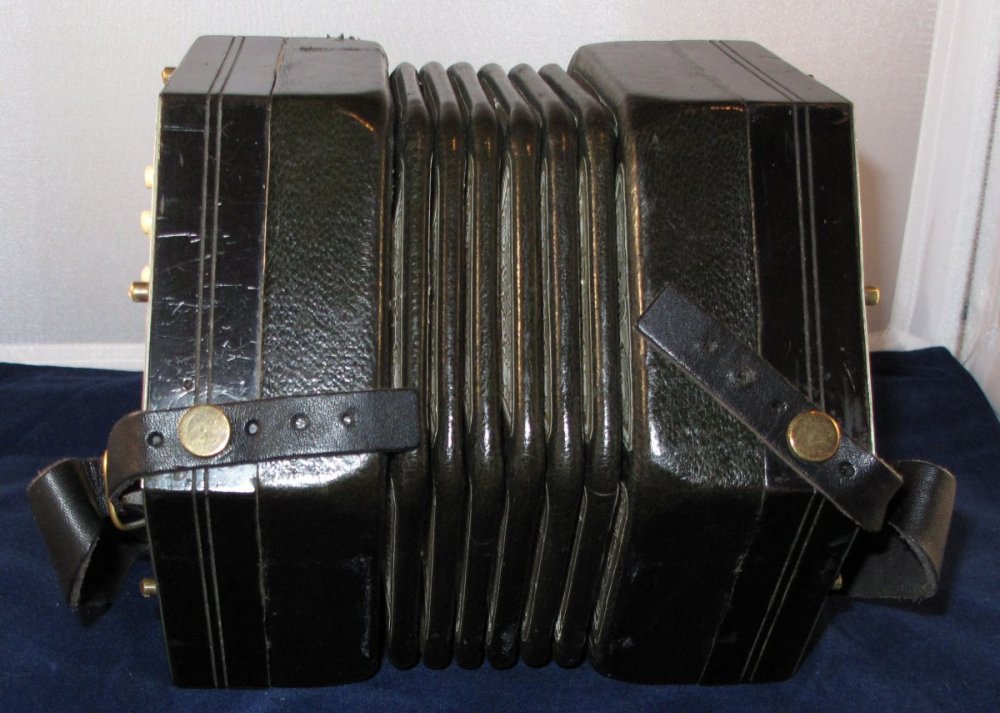
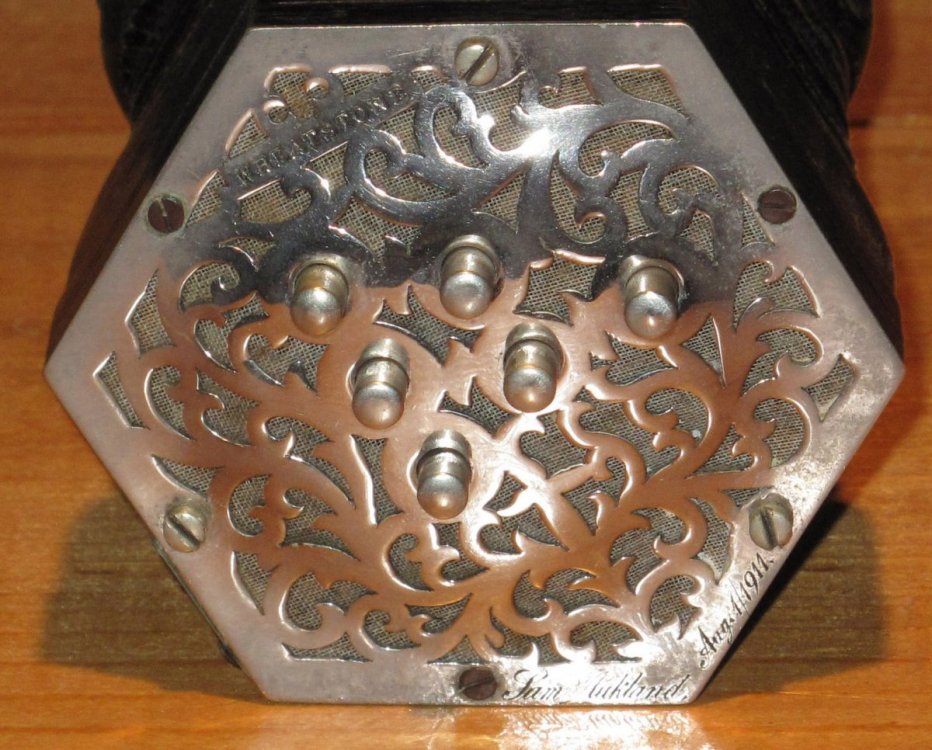
Miniature Concertinas To Be Sold
in Buy & Sell
Posted
Conzertino,
Yes, it was reunited with one of its sisters.